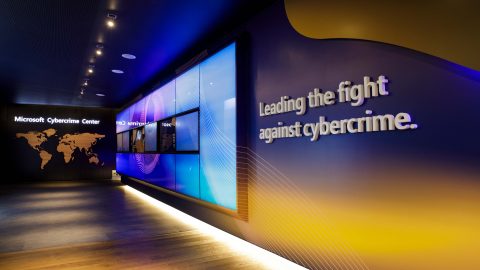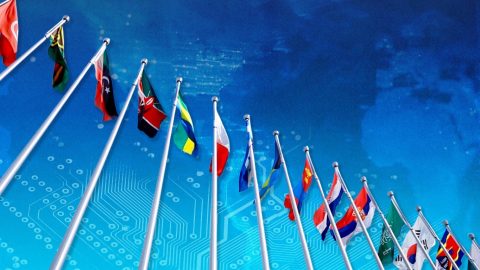How Microsoft is responding to the COVID-19 pandemic in Washington state
The impact of COVID-19 is being felt in every household and daily life has been changed. It has reinforced the drive for global citizenship and cooperation between governments, businesses and non-profit organizations. And it has highlighted the need for communities to pull together and tackle the threat.
Microsoft is aiding these efforts around the globe, but we also have a focus on helping the local community in which many of our employees live and work, around Washington state. Our response is constantly evolving, but here are just some of the ways we are supporting the Puget Sound region.
Collecting data to better understanding the spread of the virus
Data is crucial in shaping Washington’s response to the disease. Accurate case and death details drive critical forecasts for hospital capacity, influence estimates of economic impacts and inform decisions.
Our data science team has partnered with the Washington State Department of Health to build an efficient system that allows data collection about hospitalizations and disease incidence. We have helped to manage the volume of data gathered, and the effect this has on platform performance.
At the same time, we are working to roll out a hospital data collection initiative in the Puget Sound region using Microsoft Azure, capturing information about bed, ICU and ventilator capacity, as well as personnel availability. This is part of a drive by Seattle Mayor Jenny Durkan and Vice-Admiral Raquel Bono, who is leading Washington state’s COVID-19 response, to dive deeper into the data.
Real-time response capabilities
Joining forces with Seattle-based nonprofit healthcare provider Swedish Health Services, we have also built an app to give a real-time view of resources and keep track of COVID-19 patients. The Power App is being rolled out to hospitals in the Puget Sound area and has also been shared with the Department of Health and the City of Seattle.
Pooling the data, we are working alongside epidemiologists to model disease scenarios. Our data science team is also undertaking its own analysis about the spread of COVID-19 in Washington State.
Data visualization will help the public and policymakers better understand the crisis and impact of responses. We are working with the Institute of Health Metrics and Evaluation at the University of Washington on a new tool to help explore hospital bed use, and the need for intensive care beds and ventilators based on projected deaths across all 50 states.
Using technology to reduce transmission
Reducing contact with others is key to limiting the spread of the virus. We have built an app to help enable drive-through testing centers and help in the collection of biological samples. This also means data can be collected and processed faster and more accurately. This app is also being used in New York and Washington, D.C., and is likely to be rolled out more widely.
[Read more: Data, supplies, community: how Microsoft is supporting efforts to combat COVID-19]
Tracing those that may have been in contact with people who have been infected is also important. We have added Azure capabilities to the REDCap (Research Electronic Data Capture) tool, which concerned patients can use to determine whether or not to get tested. People are presented with a series of questions based on Centers for Disease Control and Prevention (CDC) guidance and are then directed to the best place to get tested. If the test is positive, it gathers information about whom that person has been in contact with to help map transmission patterns.
Another important contribution is our development of a healthcare bot for the state Department of Health, which is also being offered to companies on the front lines of the COVID-19 response, as well as by the CDC for its self-assessment tool. The bot prevents websites from becoming overloaded and helps the public quickly assess their symptoms and risk factors, suggesting the next course of action.
We are also helping the Department of Licensing and the Employment Security Department with the use of a chatbot to reduce call volume.
Supporting education
Continuing to bring education to the large numbers of children and young adults now at home requires significant technology and support. One of the biggest challenges for districts is finding the resources to invest in this, including devices for low-income students.
We have been working with the state education agency, the Office of Superintendent of Public Instruction (OSPI), to support some of their efforts. Examples of this include:
- Making Virtual Classroom and Teams available on a free trial license basis to districts
- Using existing training systems to quickly get teachers and other district personnel up to speed on Teams and other tools
- Supporting chatbots on district websites with Azure technology to help improve functionality and stability
- Helping school districts add phone line capacity to deal with increased call volumes from parents
Financial support and other donations
We have donated $1 million to help launch the Seattle Foundation’s COVID-19 Response Fund to support nonprofits and community organizations in the Puget Sound region. To date, the fund has raised over $15 million, helping around 130 community-based organizations.
We have also provided direct financial assistance to local poverty relief and support bodies including Hopelink, Bellevue LifeSpring, the Community Foundation of North Central Washington and the Columbia Basin Foundation.
[Read more: Bing COVID-19 tracker shows the latest for your area and around the world]
Our senior leadership team has made individual donations, totaling more than $1 million, to the All In Seattle rapid response fund. And our employees are also supporting local fundraising campaigns: Together with our company donation matching initiative, they have given over $1.54 million to the end of March.
Our new Give mode on Bing allows people to donate to causes in need every time they search. We have helped a number of local schools and organizations, including nonprofit Plymouth Housing.
Alongside financial support, we have also donated supplies and food to those disproportionately affected by the crisis.
We’re distributing boxed lunches to schools and community groups in King County and have donated around 12,000 pounds of food to Food Lifeline. The company has already donated 114,000 lunches and is distributing them to schools, clubs, food banks and low-income housing centers.
Protective equipment and sanitation materials are also sorely needed for doctors, nurses, and other healthcare professionals. Microsoft has purchased, repurposed and distributed five pallets of personal protective equipment, including over 240,000 FFP3 medical masks, 75,000 goggles, 100,000 nitrile gloves and other items. In addition, the company has donated 3,000 containers of disinfectant wipes and more than 3,000 bottles of hand sanitizer. A vast majority of donations were made to the Washington Department of Enterprise services, which distributed them to the highest need areas in Washington.
[Read more: Microsoft donates $1 million to Puget Sound’s COVID-19 Response Fund]
As part of efforts to procure personal protective equipment and other medical supplies and essentials, we have loaned a procurement professional to the Unified Command Group.
Building connections
Both state and nationwide, the absence of consistent broadband infrastructure continues to be a real issue. Without fast, reliable internet, daily life and work is difficult in our increasingly digital world. The current crisis has thrown this into further relief, with the internet crucial to contacting friends and family, working from home and accessing vital information and support.
Increasing internet connectivity has been a focus for Microsoft for over a decade through our AirBand initiative. Since the crisis hit, we have been working with Washington State Office of Broadband Director Russ Elliott, who is seeking to build around 100 community broadband locations around the state. We have also been working with ISP provider Native Network to bring emergency coverage to 29 school districts in Chelan, Douglas, Grant and Okanogan counties.
Alongside our Airband partners in Washington, we are urging the state to quickly develop a grantmaking process to get funds to organizations that can rapidly bring internet coverage to underserved communities.
For additional resources, visit our COVID-19 response page and follow @MSFTIssues on Twitter.










